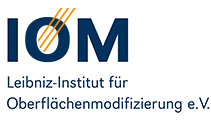In the next few years, the semiconductor industry is expected to make a technological leap towards manufacturing electronic chips with EUV (extreme ultraviolet) radiation, which will bring with it a significant demand for metal optics and the equipment to manufacture them. Metal mirrors with extremely smooth surfaces are used, for example, as optical elements in the manufacture of computer chips, laser projectors and space mirrors. The surfaces here are usually made of nickel-phosphorus (NiP) and are produced with ultra-precise diamond tools on a lathe with a surface texture (roughness) in the range of 5 nm (for comparison, the diameter of a fine hair: 40,000 nm). However, for the development of high-performance optical metal mirrors, an improvement of the surface smoothness to below 1 nm is required. The established ion beam planarization is in principle suitable to achieve this improved surface smoothness for plane workpieces up to 100 mm diameter. For larger and more complex surfaces, however, the established methods are too slow and inaccurate.
As part of the BMBF funding initiative "KMU-innovativ: Produktionsforschung", scientists from the IOM research area "Ultra-precision surfaces/ Ion beam assisted structuring and smoothing", together with the project partner NTG Neue Technologien GmbH und Co. KG, pursued the goal of developing a production system for mechanical-chemical polishing using improved, innovative ion beam planarization. The aim was to enable a surface smoothness of less than 1 nm even for larger, non-planar metal surfaces up to a diameter of 200 mm.
The innovation of the solution approach resulted from the planned combination of a novel plastic coating for surface pretreatment and the adjustment of the planarization material by varying the required ion gas mixture. The ion beam was to be generated from a gas mixture to be developed ("reactive gas") and to remove material from the coated metal mirror until the plastic was completely removed and a very smooth metal surface was created. As it turned out during the project, initial considerations to modify an existing ion beam source for this purpose to be suitable for reactive gas were associated with considerable difficulties. In addition, the procured SprayCoater has not yet shown the desired results on planar substrates. The targeted ideas and developments are now being pursued further and the necessary processes are being developed in collaboration with the IOM for potential customers.
The development of the innovative ion beam planarization system opens up excellent market opportunities in this area. In addition, increasing demand is expected in the fields of laser technology, X-ray telescopes and space mirrors, for example. The modular design of the process, consisting of plastic coating and ion beam system, also makes it possible to adapt the individual process steps to further applications, for example in medical technology.
Further information can be found here.

![[Translate to English:] [Translate to English:]](/fileadmin/_processed_/3/0/csm_IOM04095_Preview_559c90f6dc.jpg)